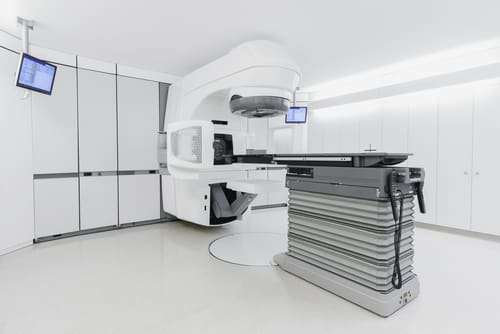Overview
A global manufacturer of medical equipment specialising in Linear Accelerators (LINAC) for oncology sought to transition their systems to align with industry-wide environmental goals. LINAC systems are critical for delivering precision radiation therapy in cancer treatment, where reliability and accuracy are essential.

Problem
The manufacturer faced a significant challenge in transitioning their LINAC systems from SF6-pressurised waveguides to designs compatible with high vacuum systems. SF6, a highly potent greenhouse gas, was previously used to pressurise waveguides to handle high power and prevent electrical discharge. However, environmental regulations required the removal of SF6 while maintaining the same high-performance standards.
Additionally, the redesigned waveguides needed to meet stringent operational requirements, including precise electromagnetic wave transmission and seamless compatibility with existing LINAC system designs. This transition presented technical hurdles associated with vacuum environments, demanding innovative solutions to ensure reliability and performance under critical conditions.
Solution
An in-depth analysis of the original waveguide design and performance requirements was undertaken. This included evaluating the mechanical and electrical specifications necessary for components to operate in a high vacuum environment. A revised design was developed to eliminate the need for SF6 while maintaining the required performance and durability for LINAC systems.
Advanced materials were carefully selected to withstand the demands of high power and vacuum conditions. The waveguide design was refined to optimise electromagnetic wave transmission, minimising power loss and ensuring precise electron acceleration. Rigorous testing was conducted throughout the development process to validate the waveguide’s performance and ensure it met all specifications.
Close collaboration with the engineering department ensured that the redesigned waveguides could be seamlessly integrated into existing systems without requiring significant alterations. This approach addressed both technical and practical challenges posed by the transition to vacuum-compatible designs.
Conclusion
The newly developed waveguide components successfully met the manufacturer’s requirements, enabling LINAC systems to operate efficiently in a high vacuum environment. The elimination of SF6 aligned with industry-wide environmental goals, and the redesigned waveguides maintained the reliability and performance necessary to support the critical demands of cancer treatment. This achievement underscores the importance of sustainable innovation in advancing medical technology.
View our comprehensive waveguide offerings including waveguide filters, adaptors, bends, couplers, and other essential components, designed to meet the highest quality standards.